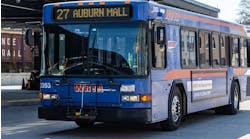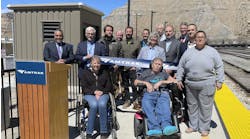Knoxville Mayor Madeline Rogero will met with a group of America’s transportation leaders on Wednesday, October 26 and discussed whether Knoxville could become the newest test-bed for companies conducting research on connected and self-driving vehicles. The discussion will take place during Intersect, an annual high-tech transportation program held at the world headquarters of Gridsmart Technologies Inc. in Knoxville, Tennessee.
Several cities including Ann Arbor, Michigan, Contra Costa, California, and Tampa, Florida have already established test beds on both public and private roads. Those test beds are creating new economic development in their regions. However, few if any can offer researchers all of the assets of Knoxville including a four-season climate, hills and flat land. “Connected and self-driving vehicles are on the cutting edge of transportation and with our existing high-tech industry and diverse geography, we may have a unique opportunity to build a new industry right here in Knoxville led by companies like Gridsmart,” she said. “While this is just a discussion, we’ll have the right people in the room to consider the viability of this opportunity.”
Among those expected to be in attendance, The Alliance for Transportation Innovation CEO and President Paul Brubaker, Utah Department of Transportation Director Carlos Braceras, Contra Costa Transportation Authority Executive Director Randy Iwasaki, Intelligent Transportation Society of America CEO Regina Hopper and Gridsmart CEO Bill Malkes. Knoxville-based Gridsmart is the developer of the world’s only single camera, sensor agnostic solution for intersection actuation, traffic data collection and situational awareness.
Right now, America is on the cusp of a transportation revolution as researchers, private industry and governments collaborate to build a safer, connected transportation network. According to the National Highway Transportation Safety Administration (NHTSA), connected vehicles that communicate with each other and with the infrastructure could prevent more than 80% of all non-impaired crashes. The potential to save lives is staggering. More than 30,000 people die in traffic accidents each year and in 2016, fatalities are trending significantly higher.


